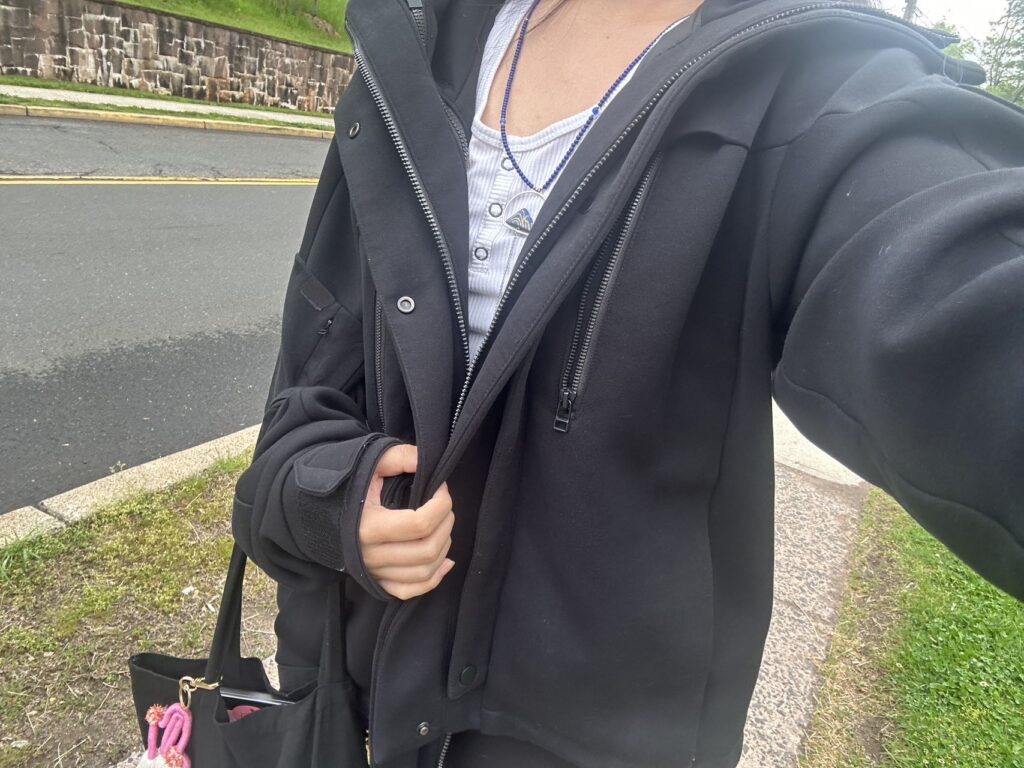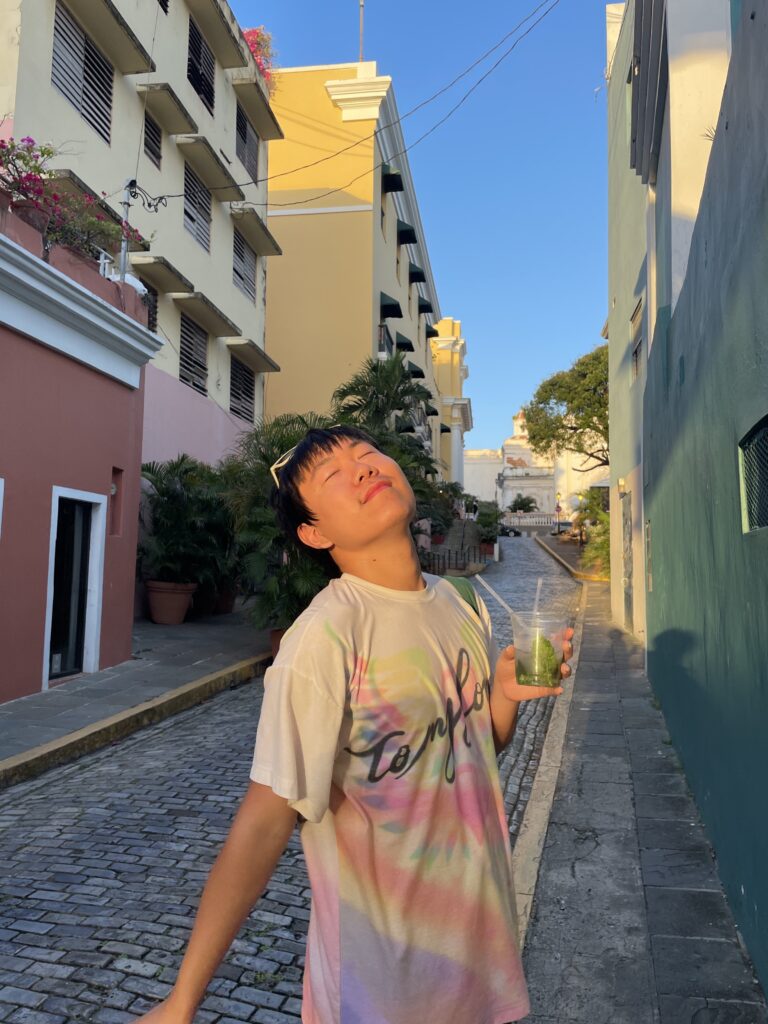The Story of Garments
In the introduction to “Sick Building Syndrome and the Problem of Uncertainty,” Murphy invites readers to take a deep breath and imagine their bodies being penetrated by millions of imperceptible particles—air molecules, pollens, and even chemicals. Through this imagery, Murphy aims to introduce the audience to a complex ailment—sick building syndrome—that emerged in Reagan-era America and to explore the nuanced connections between our bodies and the environment. I was captivated by the intricate dynamics between our presence and the outside world, and how they demonstrate a sensory experience that can greatly influence one’s physical, mental, and social wellbeing under specific circumstances. This project focuses on the frontier where our bodies meet the environment—clothing serves as a boundary between our physical bodies (inside) and the environment (outside). Clothes can both block and enhance our experience of the world and our inside feelings. Therefore, I found it a good departure to explore sensory experience. The two sensory experiences most associated with clothing are visual stimulation and the tactile sensations of its texture on our physical bodies. I would like to challenge these two perspectives with a different sensory experience—auditory sense.
I interviewed several people about their connections and feelings regarding a piece of garment that held deep meaning for them, and I decided to create some ASMR videos to capture their sensory experiences and memories based on their descriptions. In our conversations, I discovered that people heavily emphasized the usage and appearance of clothes but had relatively limited methods of describing the sensory experience of wearing them. This phenomenon is reflected on the product information pages of shopping websites as well. The display of models wearing the product is highly staged and intentional. Even for those pictured in outdoor or everyday settings, we still couldn’t break the boundaries between visual and textual information-based ways of knowing. As I mentioned previously, clothes attach to our physical body as the most intimate company. Therefore, I feel that we should be able to delve deeply into our sensory perceptions of the wearing experience. I would like to explore a new sensory experience, so I chose ambiance ASMR as the format to display, hoping to break the boundaries between visual and audio experiences. I recreated four different settings and the sounds of their respective environments: waking up to the drawing class, a rainy day in Cusco, a summer afternoon in the town, and the tranquil nighttime ambiance before sleep.
I collected most of the sound samples using a Zoom recorder in real-life situations, and I also used various materials to mimic everyday sounds. Therefore, the majority of the sounds were self-recorded, with exceptions such as the iPhone low-rise alarm, ice cream van chime, and downloaded music samples.
Waking up to the drawing class
Sonia: It feels like armor, shielding me from the harshness of the outside world. When I wear it, I sense a barrier against negativity. This coat accompanies me almost daily in fall and spring: to my drawing class, my art history class, and even as I ascend the steps outside our home. Those journeys often leave me weary, my heart pounding like a drum.
I was wearing a fuzzy baby blue cardigan when I was interviewing Sonia, and she asked me to pick a name for my coat.
Sonia: If I were to name my coat. My choice would be charcoal because it evokes memories of my drawing class. I recall donning it while creating a self-portrait with charcoal. It mirrored the bold strokes of charcoal sticks—tough, rough, and as dark as night. The contour and the fabric are also very hard and crude. When rubbing against itself, it produces a rustling sound like the sticks rubbing against the canvas.
A rainy day in Cusco
Yolanda: I bought my cardigan from a woolen goods store in Cusco, Peru, an old mountain town where the weather often veered to rainy. As I strolled along a cobblestone path, the dampness underfoot led me to seek refuge in a café for a rest. While I relaxed, my friend ventured off to explore and stumbled upon this charming store. Everything in it was crafted from wool by the owner herself. She even adorned some items with woolen flowers she made using knitting needles. When I purchased my cardigan, she sewed one of those delicate blooms onto it.
Summer afternoon in the town
Charlie: I really like this t-shirt, especially its color. I would wear it to many special events—seeing my friends, going to parties, being on holidays… I love the energy and warmth it radiates through its vibrant colors.
I asked Charlie to imagine a special occasion where he would wear this T-shirt to, and he kept silent for a while.
Charlie:
I imagine myself in a serene town, casually exploring its winding streets until I stumble upon this quaint gem. While there aren’t many people around, the atmosphere buzzes with vitality as locals go about their daily lives. I observe numerous couples, perhaps envisioning myself among them. It feels like a summer afternoon, perfect for indulging in ice cream from the local shop. Amidst the peaceful ambiance, the only sounds are the gentle ringing of bicycles traversing the streets.
Nighttime before bed
Evelyn: It’s my boyfriend’s T-shirt, so… You know what I mean, and you can imagine the feeling.
Evelyn started by talking about the security her pajamas provided, but when I brought up the sentimental value clothes can carry, she quickly suggested that I create something based on her boyfriend’s T-shirt, which she wears as an oversized garment. She spoke about the sense of security and protection that this piece of clothing could offer her, making her feel shielded from the stresses of life. Evelyn also mentioned that wearing specific types of clothing could make her feel at home.



